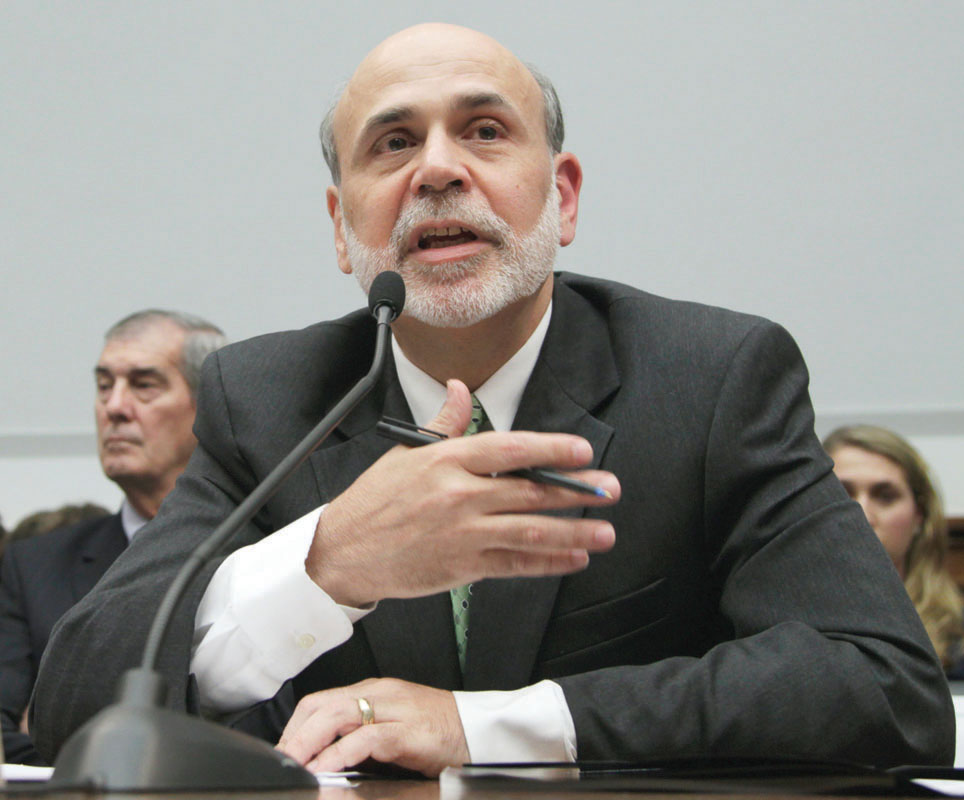Chapter Introduction
Aggregate Demand and Aggregate Supply
What You Will Learn in this Chapter
- How the aggregate demand curve illustrates the relationship between the aggregate price level and the quantity of aggregate output demanded in the economy

- How the aggregate supply curve illustrates the relationship between the aggregate price level and the quantity of aggregate output supplied in the economy

- Why the aggregate supply curve is different in the short run compared to the long run

- How the AD–AS model is used to analyze economic fluctuations

- How monetary policy and fiscal policy can stabilize the economy

Shocks to the System

SOMETIMES IT’S NOT EASY BEING BEN.
In 2008 Ben Bernanke, a distinguished former Princeton economics professor, was chairman of the Federal Reserve—the institution that sets U.S. monetary policy, along with regulating the financial sector. The Federal Reserve’s job is to help the economy avoid the twin evils of high inflation and high unemployment. It does this, loosely speaking, either by pumping cash into the economy to fight unemployment or by pulling cash out of the economy to fight inflation.
When the U.S. economy went into a recession in 2001, the Fed rushed cash into the system. It was an easy choice: unemployment was rising, and inflation was low and falling. In fact, for much of 2002 the Fed was actually worried about the possibility of deflation.
For much of 2008, however, Bernanke faced a much more difficult problem. In fact, he faced the problem people in his position dread most: a combination of unacceptably high inflation and rising unemployment, often referred to as stagflation. Stagflation was the scourge of the 1970s: the two deep recessions of 1973–1975 and 1979–1982 were both accompanied by soaring inflation. And in the first half of 2008, the threat of stagflation seemed to be back.
Why did the economic difficulties of early 2008 look so different from those of 2001? Because they had a different cause. The lesson of stagflation in the 1970s was that recessions can have different causes and that the appropriate policy response depends on the cause. Many recessions, from the great slump of 1929–1933 to the much milder recession of 2001, have been caused by a fall in investment and consumer spending. In these recessions high inflation isn’t a threat. In fact, the 1929–1933 slump was accompanied by a sharp fall in the aggregate price level. And because inflation isn’t a problem in such recessions, policy makers know what they must do: pump cash in, to fight rising unemployment.
The recessions of the 1970s, however, were largely caused by events in the Middle East that led to sharp cuts in world oil production and soaring prices for oil and other fuels. Not coincidentally, soaring oil prices also contributed to the economic difficulties of early 2008. In both periods, high energy prices led to a combination of unemployment and high inflation. They also created a dilemma: should the Fed fight the slump by pumping cash into the economy, or should it fight inflation by pulling cash out of the economy?
It’s worth noting, by the way, that in 2011 the Fed faced some of the same problems it faced in 2008, as rising oil and food prices led to rising inflation despite high unemployment. In 2011, however, the Fed was fairly sure that demand was the main problem.
In this chapter, we’ll develop a model that shows us how to distinguish between different types of short-run economic fluctuations—demand shocks, like those of the Great Depression and the 2001 recession, and supply shocks, like those of the 1970s and 2008.
To develop this model, we’ll proceed in three steps. First, we’ll develop the concept of aggregate demand. Then we’ll turn to the parallel concept of aggregate supply. Finally, we’ll put them together in the AD–AS model. 